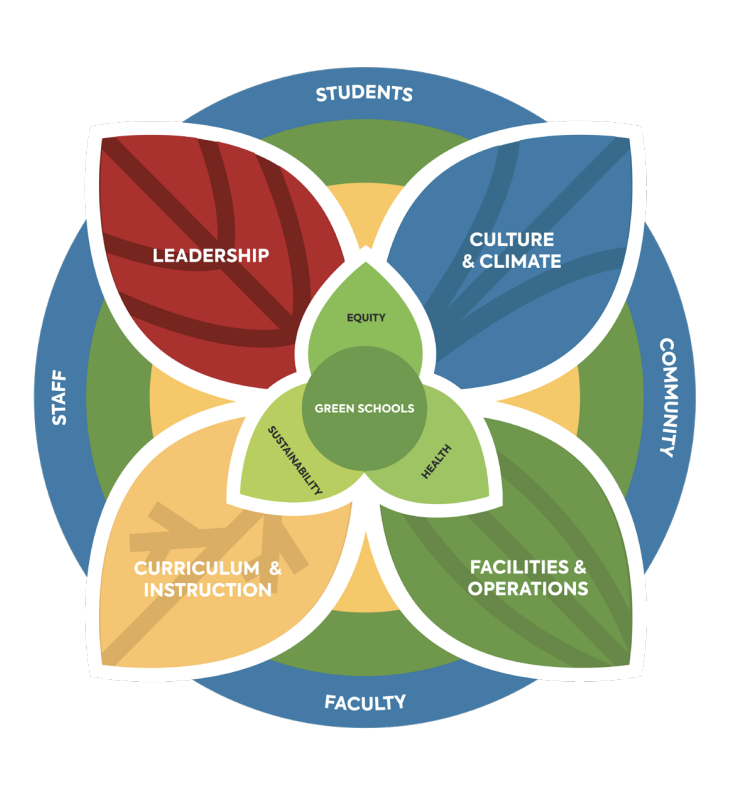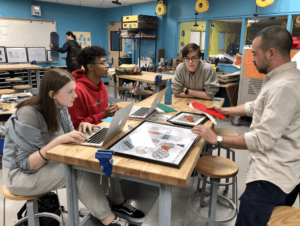How Sustainable is Your District? Use the GreenPrint from Green Schools National Network
Key Points
-
We cannot have a sustainable future without an equitable and healthy space for everyone who works, learns, and plays in our schools.
-
Schools must meet the demands of the moment to create sustainable environments and mindsets for all learners.

“No more blah, blah blah.”
The youth at COP26, the world’s most important annual climate conference, have been protesting with this chant through the duration of the convening. Young people are ready for action on climate and are tired of meetings that culminate with few actionable steps.
These young people have been educated in sustainability mindset, a way of taking into account impact, accountability, global citizenship and more. And they, rightfully, are disheartened with the current state of politics. This applies to education as well. Over and over again schools are built not according to sustainability measures, and students graduate without having the faintest idea of the impending dangers and opportunities of a world on fire.
The Green Schools National Network has been working against these oversights for years, trying to bridge the gap between the climate unaware and actionable steps. To continue their efforts and leadership they have recently released an updated version of their flagship GreenPrint, a road map for driving purposeful and productive innovation. These updates help broaden the scope of the GreenPrint to comprehensively address three separate but related spheres of influence: health, equity, and sustainability.
“Green Schools National Network recognizes that the systems change work to create the future we desire needs to be faster and more efficient than ever before,” said GSNN Executive Director Jennifer Seydel, Ph.D. “We are proud of the updated GreenPrint, which underscores that we cannot have a sustainable future without an equitable and healthy space for everyone who works, learns, and plays in our schools.”
Green Schools National Network recognizes that the systems change work to create the future we desire needs to be faster and more efficient than ever before.
Executive Director Jennifer Seydel, Ph.D
After years of conducting research and talking with educators and school leaders who are deeply engaged in the work of implementing green school practices, the updated GreenPrint is grounded in three core beliefs:
- Systemic change endures. GSNN believes healthy, equitable, and sustainable schools can only be achieved through whole-district/whole-school transformation that engages four interdependent systems that define a school: Leadership, Curriculum and Instruction, Culture and Climate, and Facilities and Operations.
- Equity matters. GSNN believes students from all backgrounds and zip codes and
regardless of social identities, including gender, sexual orientation, ability, race/ethnicity, and religion/spiritual beliefs, should have an equitable opportunity for academic success and equitable access to healthy environments. - Everyone is a leader and a learner. While leadership is key to creating healthy, equitable, and sustainable schools, every member of the school community – staff, students, parents, and community members – has a voice and a hand in creating systems and opportunities that increase engagement, deepen learning, and build the confidence and competence needed to become agents of change for a just and sustainable future.
Additionally, the framework identifies and defines four impact systems that power the levers of change. In any school or district, interaction of these systems – Leadership, Curriculum and Instruction, Culture and Climate, and Facilities and Operations – is necessary to optimize the health of the whole district and its schools and accelerate progress toward strategic goals.

At Getting Smart, we strongly believe in the importance of a sustainability mindset and that leaders of the future will lead with sustainability in ways that not only pertain to our relationship with the environment but with each other and with time itself. We also believe that wellness and equity are key to building sustainable systems. It’s time to make a difference both locally and globally.
Download the GreenPrint today and join the sustainability movement. For more information visit greenschoolsnationalnetwork.org.
This post is a part of Green Schools campaign. The climate crisis is the most complex challenge mankind has ever faced. It will require collaboration, shared truth and innovation at a scale that has yet to be realized. Through blogs, conversations and events we will focus on what to teach, how to teach it and how to create a climate positive school community so that our upcoming generations know what they are up against and have a shared understanding of the challenges and opportunities ahead. You can engage with this ongoing campaign using #GreenSchools.








0 Comments
Leave a Comment
Your email address will not be published. All fields are required.